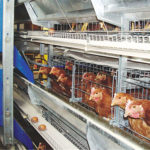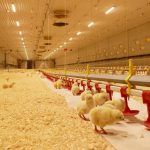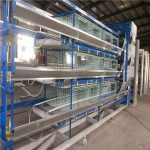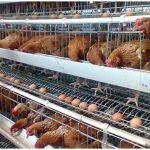We all know that the chicks have poor body temperature regulation, which is 3°C lower than that of adult chickens. The chicks are short and thin, the skin is thin, the subcutaneous fat is less, the heat preservation ability is poor, and the body temperature regulation function is gradually improved after 2 weeks of age, so it is suitable for autumn. The brooding temperature is critical to the healthy and normal development of the chicks.
The amount of drinking water in the chicks, the various physiological activities in the body, whether the digestion and absorption of the feed are normal, and the resistance to disease are directly related to the suitability of temperature. When the temperature is too low, the chicks are chilly and dense, affecting the absorption of the yolk, affecting the disease resistance, and some have a cold and squat, and when they are severely squeezed together, they cause a lot of damage and death. Excessive temperature affects the normal metabolism of chicks, loss of appetite, weak constitution, stunting, causing paralysis, and also susceptible to colds and respiratory diseases inPoultry Rearing Equipment.
The autumn temperature is low and the temperature difference between day and night is large, so the younger the chicks are, the higher the temperature stability requirements are. The initial daily temperature difference should be controlled within 3 °C, and the daily temperature difference should be controlled within 6 °C until the brooding period to avoid significant losses due to temperature instability. Judging whether the temperature is suitable, you can not only look at the display of the thermometer, you should pay attention to observe the performance temperature of the chicks. When appropriate, the chicks are evenly scattered in the brooding room, lively, appetite is good, the drinking water is moderate, and when the temperature is low, the piles are close to the heat source, and the squeaking sound is heard. When the baby is overheated, keep away from the heat source and spread his wings to breathe.

In addition, temperature control should be flexibly controlled according to changes in flocks and weather. For healthy chicks, the temperature can be lowered slightly. In the moderate temperature range, the temperature is lower than the temperature, and the feed intake is large. Big, fast growing. At night, because the amount of chick activity is small, the temperature should be 1 °C ~ 2 °C higher than the daytime. The temperature should be properly increased when the cold spell hits in the autumnbattery cage system for layers in pakistan.
The heating time should be longer in the fall, but in order to meet the upcoming winter, the temperature should be appropriately lowered to improve the chick’s ability to adapt to temperature. Generally, it is reduced by 0.3 ° C ~ 0.7 ° C per day, or can be reduced by about 3 ° C per week. When the brooding temperature drops to the lowest temperature during the day, the daytime heating can be stopped. When the brooding temperature at night falls to the lowest temperature at night, the nighttime heating can be stopped.






